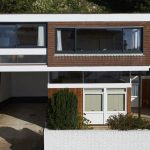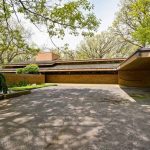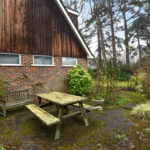
There’s a debate going on right now about 70s architecture – and Robin Hood Gardens in East London is right in the middle of it.
This slice of Brutalist architecture was built by the Smithsons Partnership between 1969 and 1972, an example of the ‘street in the sky’ concept that was taking hold of our towns and cities during the era and often described as their ‘best building’. It houses 213 flats, all overlooking a large green area of communal land. Architects are demanding it is listed and refurbished to a standard befitting its status – and a decision on this by English Heritage and architecture minister Margaret Hodge will be made in the next week.
Listing is not an option preferred by the local council. It claims upgrading will cost £70,000 per flat, with one eye perhaps on using the land as part of redevelopment of the area. But what do you think? Is it an eyesore? Or does this kind of groundbreaking architecture need to be saved and upgraded? Let us know your thoughts if you have any. Personally I think we should protect these buildings as part of our 20th century heritage.





I was reading about this in BD (Architecture newspaper), my girlfriend and I discussed it as it’s not far from our flat, and she’s an architect.
We can to conclusion that it should be kept, as a building its historic of the style, it’s the people who live their and don’t care about it that are the problem, though I do think £70k to renovate each unit is a bit steep, are they gonna deck them out in Knoll and Ligne Rosset furnishings?
They have obviously decided if they restore the building, they will remove the current tenants and gentrify the estate by selling them at inflated prices to city types.
The problem with much architecture from the 50’s and 60’s which used concrete isn’t the design, it’s the failure to up keep the building looking good. Painted walls always look better than plain grey concrete which is weathered. Those buildings which have been upgraded with better windows, cleaned and looked after often are appreciated. In Bristol the old concrete council offices was turned into flats and another into a hotel. Once cleaned and decorated they look splendid. Buildings looking like this don’t look good not because of the design but because of lazy upkeep.
It’s an awful example of buildings that were designed by people who never intended to live in them. What an eyesore.
Looks totally horrible, a battery chicken farm for the ‘lower orders’.
Bet you don’t find many architects living in buildings like that.
I agree that it should be kept. It’s an interesting building of its time and with considered work, it has the potential to be a desirable place to live. Also it would be interesting to see where the 70k refurbishment PER FLAT cost came from – Surely it could be done at a lower cost and would be cheaper and quicker than building from scratch.